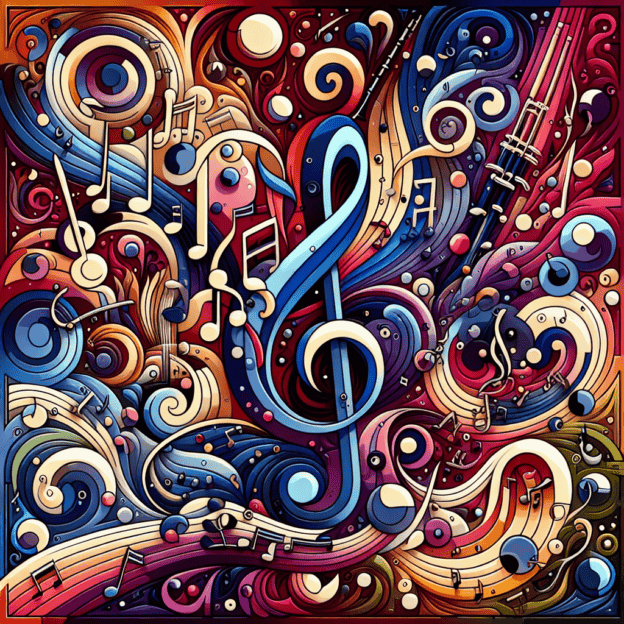The G# chromatic scale has long stood as an intriguing aspect of clarinet music, weaving itself into the fabric of compositions that have shaped the clarinet's repertoire. Ever wonder how this scale can play such a significant role, you might ask? Well, grab a chair, because we're about to unravel its tale!

Clarinet Fingering Charts are always FREE at MartinFreres.net!
Historical Significance of the G# Chromatic Scale
The G# chromatic scale has been a cornerstone of clarinet music for centuries. From classical masterpieces to modern hits, it has brought depth and richness to countless compositions. This scale isn't just a series of notes; it's a powerful tool that captivates audiences and elevates performances.
Let's journey back to the late 18th century. Musical giants like Mozart and Beethoven were just beginning to explore the potential of this chromatic scale. It opened up a world of new harmonic possibilities, revolutionizing the way composers crafted their melodies. These musical geniuses saw that the G# chromatic scale could add that special something, turning good music into unforgettable experiences.
| Era | Significance of G# Chromatic Scale |
|---|---|
| Late 18th Century | Exploration by Mozart and Beethoven |
| 19th Century | Integration into orchestral compositions |
| 20th Century | Adoption in jazz and contemporary music |
| Present Day | Versatile tool across various genres |
Evolution of Orchestral Music
As orchestral music evolved, so did the role of the clarinet. Composers were pushing boundaries, and the clarinet's versatility became increasingly apparent. The G# scale allowed musicians to glide effortlessly through notes, creating a smooth, flowing sound that brought music to life. Can you imagine hearing a clarinet soar through a passage featuring the G# chromatic scale? It's the kind of performance that gives you goosebumps!
Modern-Day Relevance
Fast forward to today, and the G# chromatic scale is far from outdated. It's still at the heart of various musical styles, from jazz improv to cutting-edge classical pieces. Jazz clarinetists, in particular, love this scale for creating off-the-cuff solos that leave audiences spellbound. It's the perfect tool for musicians to showcase their unique style with a touch of pizzazz.
Gershwin's Influence
Take George Gershwin's famous “Rhapsody in Blue,” for instance. This piece wowed listeners with its bold use of chromatic lines, giving the G# scale plenty of time in the spotlight. It's a prime example of how a simple scale can pack an emotional punch. When musicians play this piece, they're not just hitting notes; they're taking the audience on an emotional journey.
Benefits for Clarinetists
So, how can you make the most of the G# chromatic scale? For one, it's a fantastic way to improve your finger dexterity. Think of it as a workout for your fingers – challenging but rewarding! Regular practice with this scale can boost your agility and help you nail those tricky passages with ease.
Creative Possibilities
The G# chromatic scale is also a goldmine for creating beautiful musical phrases. Have you tried composing your own passages using this scale? If not, why not give it a shot? You might be surprised at the creative doors it opens!
Ensemble Play
In group settings, the G# chromatic scale really shines. Whether you're playing in unison or harmony, it can create rich, complex textures that transport listeners to another world. Next time you're rehearsing with your ensemble, try incorporating this scale. You might just breathe new life into familiar tunes!
Emotional Expression
One of the most powerful aspects of the G# chromatic scale is its ability to convey emotion. Music tells stories, and this scale gives you a full palette of colors to paint with. Whether you're aiming for joy, sadness, or mystery, the G# chromatic scale can help set the perfect mood. Experiment with different dynamics – play it soft and tender or bold and loud – and see what emotions you can evoke!
Conclusion
The G# chromatic scale is more than just a series of notes. It's a bridge connecting you to your audience, a tool for expressing complex emotions, and a link to the great musicians of the past. Every time you play, you're not just making music – you're continuing a rich musical legacy.
So, the next time you pick up your clarinet, take a moment to appreciate the G# chromatic scale. Let it inspire your playing and guide your musical journey. Who knows what amazing sounds you'll create?
Remember, the G# chromatic scale isn't just another set of notes – it's your ticket to exploring the vast world of clarinet music. What will you discover on your musical adventure?
Table of Contents
- Historical Significance of the G# Chromatic Scale
- Evolution of Orchestral Music
- Modern-Day Relevance
- Gershwin's Influence
- Benefits for Clarinetists
- Creative Possibilities
- Ensemble Play
- Emotional Expression
- Conclusion








